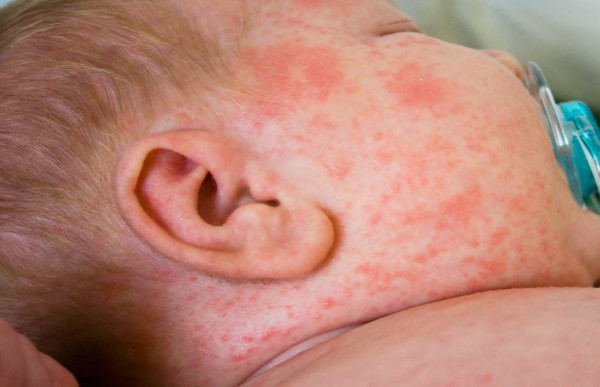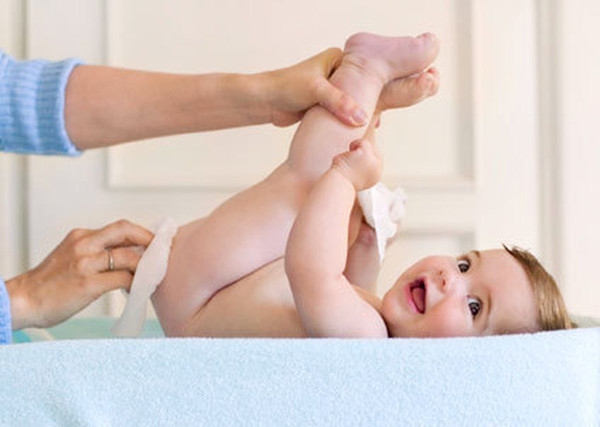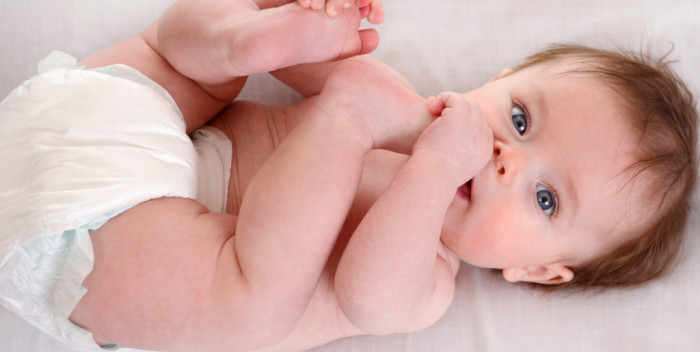Diaper dermatitis: where it comes from and how to treat it
Diaper dermatitis is a common occurrence in newborns. Most often, girls or children who eat formula are exposed to this disease.
Content
Diaper dermatitis: photo
Diaper dermatitis is an inflammatory process of the skin in response to mechanical, chemical or physical stimulation. The development of the disease depends on the properties of the baby's skin and the nature of its nutrition. It is localized in certain areas of the skin. 
Depending on the affected area, there are different types of dermatitis:
- The defeat of the folds in the children's neck. Skin irritation occurs as a result of frequent spitting up masses on the neck. If the baby often spits up, then these masses become causative agents of skin inflammation, which is under the diaper and under the clothes.
- With the perianal form of dermatitis, the skin around the anus becomes inflamed. Irritation is caused by the enzyme activity of the stool and depends on the child's nutrition.
- The defeat of the folds in the groin area.
- Irritation of the genitals. The occurrence of this type of dermatitis is influenced by the characteristics of the child's urine.
Often, the skin of the baby under the diaper becomes a problem area. The most common type of irritation in this area is abrasion, which can be quickly cured in the initial stages.
The bright red color of the skin under the diaper indicates that the child has seborrheic dermatitis. If the disease is not treated immediately, then yellow scales appear and the affected area increases, rising up the child's body. 
Another type of diaper dermatitis is intertrigo. It occurs when the skin rub against each other and is accompanied by redness. If urine enters the affected area, the inflammatory skin becomes covered with a yellow substance.
Irritation due to diaper edges rubbing the baby's skin is called marginal dermatitis.
Dermatitis accompanied by severe itching is called atopic. It affects various parts of the body, including the area under the diaper.
With prolonged use of antibiotics by a child, candidal dermatitis may appear. It is characterized by a bright red rash and damage to the groin area. If the disease lasts more than 3 days, the infection enters the body.
Staphylococcal type of diaper dermatitis is impetigo. It is distinguished of 2 types: accompanied by blisters - bullous, and without blisters, but with scars and a yellow crust - non-bullous. The surface of the thighs and buttocks, the lower abdomen is exposed to such a subspecies.
To determine the type of dermatitis a baby is suffering from, an external visual examination is sufficient. Additional smears from the affected areas are taken only in cases of a long treatment period. 
Diaper dermatitis: the cause
The main root cause of the appearance of diaper dermatitis is the neglected personal hygiene of the baby. Due to untimely or improper care of the baby's skin, he gets irritated with the contacted substances.
When diapers are used by parents, the main irritants are:
- prolonged exposure of the baby's skin in contact with urine or feces;
- due to the fact that the skin is constantly closed, conditions arise with an increased moisture content and temperature;
- favorable conditions for the development of various fungi.
 In infants with dermatitis, the feces may contain the fungus Candida albicans, which is the causative agent of candidiasis. This type of fungus appears in the intestinal flora if the rules of personal hygiene are not followed. Also, if the baby is being treated with antibiotics, then the likelihood that he will develop diaper dermatitis based on candidiasis increases. This is due to the fact that antibiotics have such a property as the destruction of microorganisms that inhibit the spread of fungi. It turns out that the body creates a favorable environment for the growth and development of fungal infections.
In infants with dermatitis, the feces may contain the fungus Candida albicans, which is the causative agent of candidiasis. This type of fungus appears in the intestinal flora if the rules of personal hygiene are not followed. Also, if the baby is being treated with antibiotics, then the likelihood that he will develop diaper dermatitis based on candidiasis increases. This is due to the fact that antibiotics have such a property as the destruction of microorganisms that inhibit the spread of fungi. It turns out that the body creates a favorable environment for the growth and development of fungal infections.
More rare causes of diaper dermatitis are unbalanced diet, allergic or congenital diseases.
Subject to all the rules of personal hygiene, an allergic reaction to the applied creams, wet wipes or diapers can become the cause of irritation on the baby's skin.
Diaper dermatitis in children: symptoms
Symptoms by which you can determine the presence of a disease in an infant are redness and abrasions in the groin, thighs, buttocks and genitals.
The first sign of dermatitis is the appearance of diaper rash. In order to prevent the infection from spreading, it is necessary to immediately begin treatment when the first signs are found. Otherwise, dermatitis will start to affect more and more healthy areas of the skin. As a result, red spots, erosion, wounds, peeling, blisters with fluid and yellow crusts are formed on the skin.
Babies become moody during illness and often cry. 
Diaper dermatitis treatment
Diaper dermatitis can be treated with folk methods and with the help of medical means. During therapeutic treatment, it is imperative to observe the basics of personal hygiene and apply ointments and creams to the inflamed areas of the skin.
For medical treatment, the following procedure must be followed:
- Remove the diaper from the baby and wash the inflamed skin with warm water.
- Stop using various cosmetics, only plain water or hypoallergenic soap is allowed.
- Wipe skin dry with a towel, but do not rub.
- Lubricate the skin with a warm solution of chamomile, oak or string with a cotton swab.
- Give your baby time to take air baths.
- Spread an anti-inflammation agent in the form of an ointment or cream, you can also use talcum powder.
 Among the popular methods, one can single out the regular taking of air baths by the child and the frequent change of diapers. Moreover, before putting on a new diaper, it is imperative to let the baby's skin breathe. To relieve irritation and dry the skin, you can use infusions of chamomile, celandine and string herbs. They are added to the water when bathing the baby. With frequent occurrences of diaper dermatitis, it is recommended to pay attention to reusable nappies... They do not float the skin and allow it to breathe.
Among the popular methods, one can single out the regular taking of air baths by the child and the frequent change of diapers. Moreover, before putting on a new diaper, it is imperative to let the baby's skin breathe. To relieve irritation and dry the skin, you can use infusions of chamomile, celandine and string herbs. They are added to the water when bathing the baby. With frequent occurrences of diaper dermatitis, it is recommended to pay attention to reusable nappies... They do not float the skin and allow it to breathe.
To prevent the appearance of diaper dermatitis, you need to monitor the condition of the baby's skin, keep it clean. If you do not start the course of the disease, then diaper dermatitis can be cured in 3-4 days.
With an advanced stage, the treatment process will drag on for a long time and after recovery, cases of relapse are possible.
In case of a complicated form of the disease, it is imperative to be observed by specialists such as an immunologist, dermatologist, allergist and gastroenterologist.


